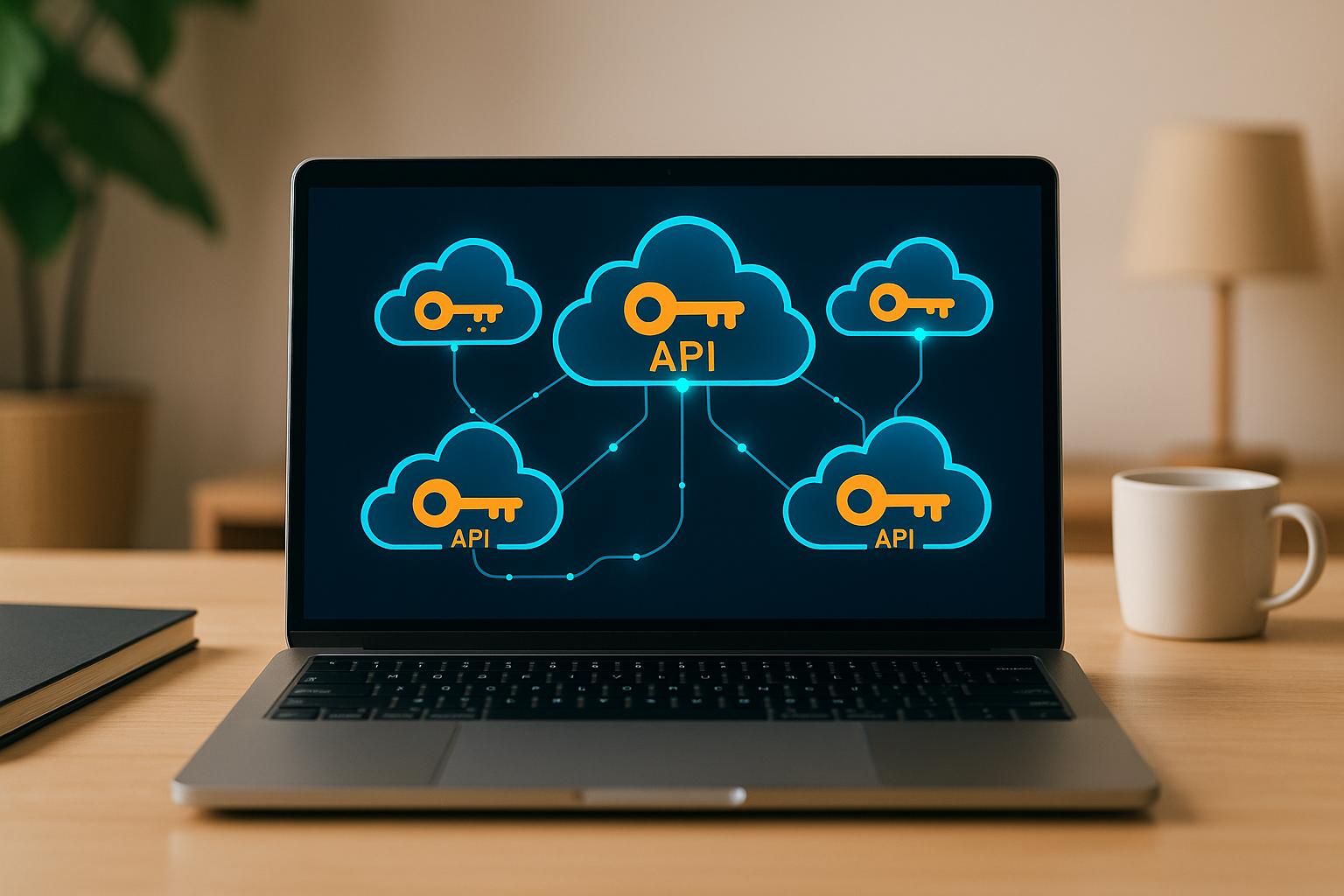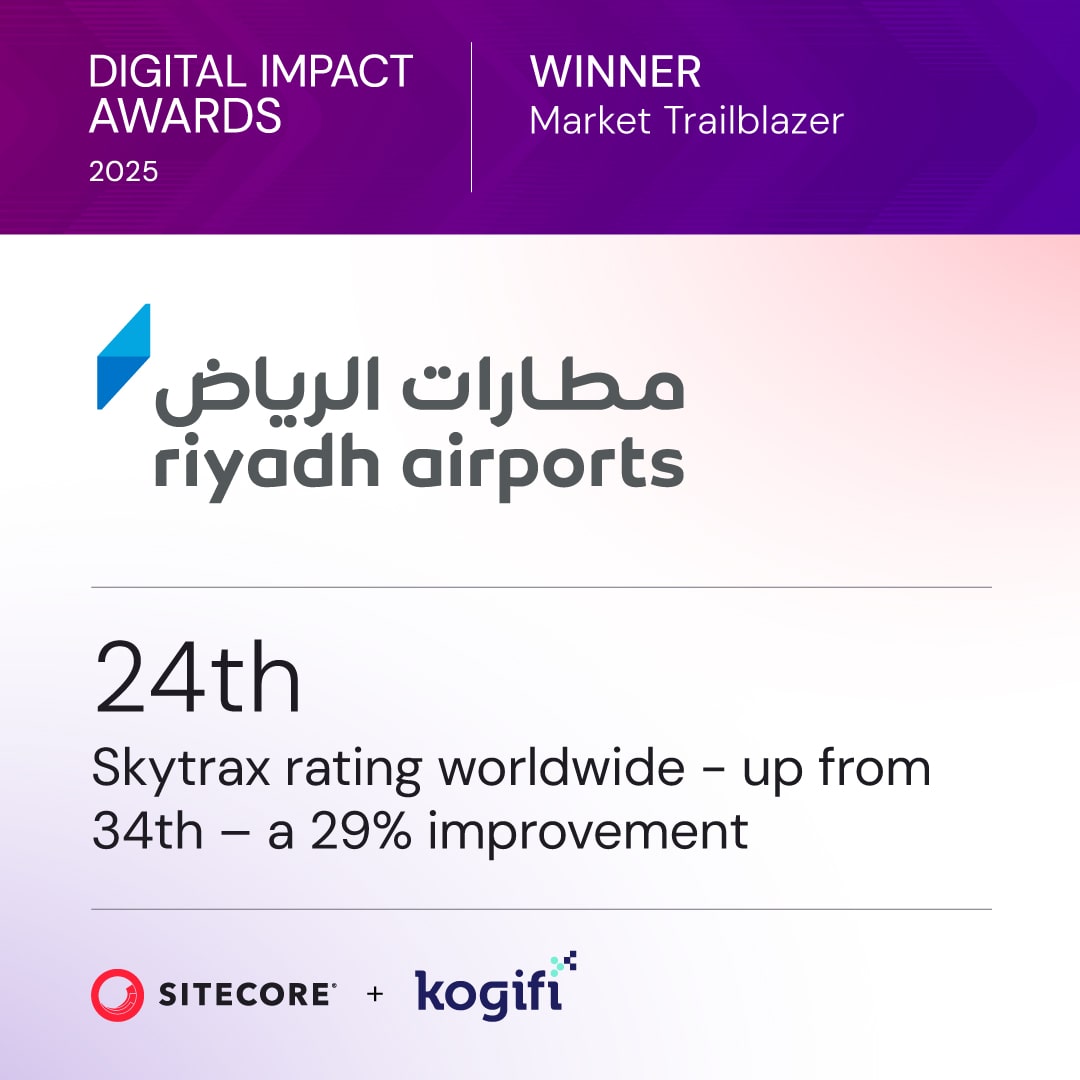Managing API keys across multi-cloud environments is complex but critical for security. With 86% of companies using multi-cloud setups and API-related attacks rising by 400% in recent years, organizations face challenges like key sprawl, fragmented controls, and compliance issues. Poorly managed keys can lead to breaches, data loss, and regulatory penalties.
Here’s how to address these challenges:
- Centralized Secret Management: Use tools like HashiCorp Vault or AWS Secrets Manager to securely store and rotate keys.
- Strong Authentication: Implement OAuth 2.0 and the principle of least privilege to restrict access.
- Regular Key Rotation: Rotate keys frequently and monitor for unusual activity.
- Zero Trust Security: Continuously verify access and enforce granular controls.
Key Stats:
- 96% of organizations report challenges with multi-cloud strategies.
- 80% experienced cloud security incidents in 2022.
- Shadow APIs significantly increase attack surfaces.
Key Management in the Public Clouds (AWS, Azure, Google)
Main Challenges in Managing API Keys Across Multi-Cloud Platforms
Adopting a multi-cloud strategy comes with undeniable advantages, but it also introduces some serious challenges - especially when it comes to managing API keys. Without proper planning and the right tools, organizations can quickly find themselves overwhelmed by technical, regulatory, and governance issues.
Complex Distributed Infrastructure
Multi-cloud environments fundamentally shift how API key management works. With multiple cloud providers in play, there’s a massive increase in the number of endpoints and services that need to be secured. This complexity makes it harder to maintain visibility and control compared to single-cloud setups.
Each cloud platform has its own infrastructure, authentication methods, and security protocols. As a result, a single application might need to juggle dozens of API keys, all with different formats, expiration dates, and access permissions. On average, enterprises manage over 1,000 APIs, with each application relying on 26–50 APIs.
This decentralized setup creates challenges for oversight. Inconsistent identity management systems across providers mean IT teams are forced to work with multiple consoles, each with its own quirks. This lack of centralized control can lead to blind spots, making it easier for attackers to exploit vulnerabilities. Over time, this fragmentation contributes to the unchecked growth of APIs, including unmanaged "shadow APIs."
Key Sprawl and Shadow APIs
One of the biggest challenges is key sprawl - the uncontrolled spread of API keys without a clear management system. Adding to the problem are shadow APIs, which are APIs created or deployed outside of official IT processes.
Shadow APIs are often introduced by internal teams, contractors, or legacy systems and operate without proper documentation or governance. These rogue APIs can expose sensitive data, lack robust authentication, and often harbor unpatched vulnerabilities. As Dave Shackleford from Voodoo Security points out:
"Shadow APIs are an inevitable byproduct of modern development, but they don't have to be a liability. Organizations can rein in these unauthorized interfaces by employing real‑time shadow API discovery techniques, a strong governance model and a collaborative DevSecOps culture."
These unmanaged APIs expand the attack surface, making it harder to enforce consistent security practices and monitor for misconfigurations.
Compliance and Regulatory Requirements
Operating in a multi-cloud environment also means navigating a tangled web of compliance and regulatory demands. Each Cloud Service Provider (CSP) has its own security policies and compliance requirements, creating a complex landscape for organizations to manage. Data sovereignty laws add another layer of difficulty, as companies must ensure data is handled according to local regulations. With 75% of countries enforcing some form of data residency law, geographic considerations become a critical factor in system design.
On top of that, APIs need to comply with multiple frameworks like NIST, ISO 27001, GDPR, HIPAA, and the OWASP API Security Top 10. Each framework outlines specific rules for generating, storing, rotating, and monitoring API keys. The challenge intensifies when data spans across different regions with varying privacy laws. Ari Weil from Akamai explains:
"They can quickly scan and categorize data to identify what's subject to specific laws, such as GDPR or HIPAA, and identify where to apply or enforce policies accordingly. This not only speeds up compliance but also reduces human error."
These regulatory hurdles extend to development pipelines, where automation can inadvertently increase exposure risks.
DevOps and CI/CD Pipeline Risks
Modern development practices like DevOps and CI/CD pipelines have introduced new vulnerabilities in API key management. If not handled carefully, API keys can end up exposed in logs, configuration files, or source code repositories, making them an easy target for attackers. The automation that speeds up development can also amplify risks. For example, embedding API keys in CI/CD pipelines can lead to accidental exposure if systems are misconfigured or access controls are weak. Shared environments and the reuse of keys across different stages of development only increase the risk of breaches.
| Challenge | Impact | Key Risk Factors |
|---|---|---|
| Distributed Infrastructure | Loss of centralized control and visibility | Multiple consoles, inconsistent policies, fragmented identity systems |
| Key Sprawl and Shadow APIs | Increased attack surface and governance gaps | Untracked APIs, lack of documentation, inconsistent security measures |
| Compliance Requirements | Regulatory violations and financial penalties | Data sovereignty laws, multi-jurisdiction regulations, complex audits |
| DevOps Pipeline Risks | Exposed credentials and automated attacks | Shared environments, rapid deployments, embedded keys |
These challenges highlight the need for robust API key management strategies that can handle the complexities of multi-cloud environments while ensuring security and compliance remain top priorities.
Best Practices for Secure API Key Management
Centralized Secret Management Tools
A solid approach to managing API keys starts with centralized secret management tools. These tools eliminate risky practices, like embedding API keys directly into scripts or configuration files - a common cause of security breaches.
When secret management is scattered, it complicates compliance and increases security risks. Centralized tools streamline this process, ensuring better security and operational control.
If your setup is tied to a specific cloud provider, cloud-native solutions can be a good fit. For instance:
- AWS Secrets Manager integrates smoothly with other AWS services and supports automatic key rotation.
- Azure Key Vault offers similar capabilities for Microsoft environments.
- Google Cloud Secret Manager provides strong encryption and access controls for Google Cloud Platform users.
For businesses operating in multi-cloud environments, cross-cloud solutions like HashiCorp Vault and Infisical offer greater flexibility. HashiCorp Vault includes features like dynamic secret generation and replication across data centers. Infisical delivers a platform with granular access controls, audit logs, and compliance tools, available as both a managed service or self-hosted option.
As Akeyless puts it:
"Secrets management ensures that as organizations scale the number of machine identities across their infrastructure, each one is properly authenticated and validated."
By centralizing secret management, you lay the groundwork for stronger authentication and better security practices.
Strong Authentication Protocols
Storing your API keys securely is only part of the equation. Using strong authentication protocols like OAuth 2.0 and OpenID Connect adds an extra layer of protection. These frameworks go beyond basic API key authentication by introducing token-based security.
For added control, federated identity management allows centralized oversight of user identities while enabling secure access across multiple cloud services.
Applying the principle of least privilege is another key step. By restricting access to only what’s necessary, you limit potential damage if credentials are compromised. This also simplifies tracking and auditing.
Key Rotation and Monitoring
Regularly rotating API keys is one of the simplest yet most effective ways to reduce security risks. Experts recommend rotating keys at least every 90 days or more frequently, depending on your compliance and security needs.
To avoid disruptions, always deploy a new key before deactivating the old one. Keep a detailed record of where keys are used, who has access to them, and whether they are active or inactive after rotation.
Monitoring and analytics are equally important. By tracking key usage in real time and setting alerts for unusual activity, you can detect and respond to potential threats quickly. Detailed audit logs help ensure accountability and compliance. Key rotation should also be triggered by specific events, such as when a key is leaked, an employee leaves the organization, or unauthorized access is suspected.
Together, monitoring and rotation align with Zero Trust principles by enforcing continuous verification.
Zero Trust Principles in API Key Management
Zero Trust security models take a "trust nothing, verify everything" approach, which is especially useful for API key management. This means every access request is subject to continuous verification, regardless of whether the user or application has a valid API key.
In practice, this involves:
- Continuous authentication and authorization checks: Even with a valid API key, the system should confirm the identity and permissions of the user or application for each request, particularly for sensitive operations.
- Network segmentation: Isolating parts of your infrastructure and requiring explicit permissions to move between segments reduces the impact of compromised keys.
- Real-time risk assessment: Monitoring factors like request patterns, geographic locations, and access times can trigger additional verification steps or temporary restrictions when something seems off.
Granular access controls are another key aspect. By scoping API keys to specific resources or operations, you can limit the damage from compromised credentials and simplify auditing across multi-cloud environments.
This continuous verification approach integrates seamlessly with broader enterprise security strategies.
| Secret Management Tool | Best For | Key Strengths | Multi-Cloud Support |
|---|---|---|---|
| AWS Secrets Manager | AWS-focused environments | Native AWS integration, auto-rotation | Limited to AWS ecosystem |
| Azure Key Vault | Microsoft environments | Strong Azure integration | Limited to Azure ecosystem |
| Google Cloud Secret Manager | Google Cloud Platform | Strong encryption, GCP integration | Limited to GCP ecosystem |
| HashiCorp Vault | Large enterprises, complex setups | Dynamic secrets, cross-platform support | Excellent multi-cloud support |
| Infisical | Multi-cloud, cost-conscious needs | Open source, flexible deployment | Excellent multi-cloud support |
sbb-itb-91124b2
Integrating Secure API Key Management with Enterprise Platforms
Platform-Specific Integration Methods
When working with enterprise platforms like Sitecore, Adobe Experience Manager (AEM), and SharePoint, integrating secure API key management requires tailored approaches. Each platform has its own configuration and security requirements, making it essential to align integration methods with their unique ecosystems.
For Sitecore, secure API key management typically involves leveraging its configuration system and using secure connection strings. Custom modules can be designed to connect with centralized secret management tools, ensuring keys are accessed securely at runtime instead of being stored in configuration files.
In Adobe Experience Manager (AEM), the OSGi configuration framework serves as the foundation for integrating cloud key management services. By creating custom OSGi services, organizations can seamlessly incorporate automated key rotation without needing to restart applications.
SharePoint environments often integrate tightly with Azure Key Vault. Using the SharePoint Framework (SPFx), managed identity features allow access to keys without embedding credentials in the codebase. This integration can extend to Power Platform solutions, ensuring centralized management of API keys for external services.
The key to successful integration lies in understanding each platform's native security practices while maintaining centralized oversight of API key management.
API Key Lifecycle Management
Managing API keys across enterprise platforms operating in multi-cloud environments can be complex. Automated lifecycle management streamlines this process, reducing errors and ensuring consistency.
The lifecycle begins with secure key generation and automated provisioning. Once generated, keys should be distributed to platform configurations through deployment pipelines, ideally during scheduled maintenance windows. A dual-key rotation strategy, where new keys are activated while old ones are still valid, ensures a smooth transition.
Monitoring and auditing play a critical role in compliance. Organizations should track key usage and identify which components are accessing the keys to verify that usage aligns with expected patterns. Dependency mapping is also essential, as it ensures all affected integrations are updated during key rotations.
Automation tools that handle key rotation, issue expiry alerts, and enforce security policies help reduce operational overhead and minimize potential errors.
Aligning Key Management with Enterprise Security Policies
Enterprise security policies often require strict adherence to frameworks like HIPAA, PCI DSS, FIPS 140-2, and GDPR. Leveraging a cloud-hosted key management service allows for precise access control policies, reducing risk and supporting compliance.
Role-Based Access Control (RBAC) is crucial for ensuring that users and services only access the keys they need. For instance, a Sitecore content editor might need access to marketing automation API keys, whereas a SharePoint administrator would only interact with specific integration keys.
Automation is key to enforcing security policies. This includes ensuring keys meet complexity standards, have predefined expiration dates, and can only be accessed from authorized networks or applications. Comprehensive audit trails should capture details about key usage and provide context for monitoring and incident response.
If a key is compromised, organizations must have robust incident response plans. These may include temporarily disabling affected features, reverting to previous configurations, or activating backup integration paths while deploying new keys. Such strategies, combined with solutions like those offered by Kogifi, ensure secure API key management across enterprise platforms.
| Platform | Key Integration Method | Rotation Strategy | Compliance Considerations |
|---|---|---|---|
| Sitecore | Custom modules with configuration system | Dual-key transition during maintenance | Data residency for marketing data |
| Adobe Experience Manager | OSGi services with managed identities | Automated rotation via pipelines | Content security and digital rights |
| SharePoint | Azure Key Vault integration | Native Microsoft identity integration | Information governance policies |
Kogifi applies these practices to deliver secure, scalable API key management solutions tailored to enterprise needs.
Future Trends in Multi-Cloud API Key Management
As businesses embrace increasingly complex multi-cloud setups, the way they manage API keys is undergoing a major transformation. Emerging trends are reshaping strategies around security, compliance, and operational efficiency.
Impact of AI and Automation
AI is playing a game-changing role in how organizations handle multi-cloud API key management. By 2026, 60% of enterprises are expected to integrate AI-powered API strategies. This shift highlights how automation is becoming central to security operations.
AI-driven platforms are delivering tangible results. Companies report benefits like 40% faster incident resolution, 30% higher developer productivity, and up to 30% savings in cloud infrastructure costs through better resource allocation and predictive analytics. These gains come from automating tasks that were once manual, such as API documentation, testing, and detecting threats.
Many organizations are now turning to AI-powered platforms to gain precise control over API behavior and integration settings. These systems analyze API usage patterns, predict demand, and flag suspicious activity, such as compromised keys or unauthorized access attempts.
"An AI gateway serves as your enterprise's command center for AI operations, fundamentally transforming how organizations manage their AI infrastructure." – Sudeep Goswami, CEO of Traefik Labs
A notable shift is the move toward "keyless" API authentication models, which replace static keys with identity-based access using ephemeral credentials or dynamic secrets. This approach represents a significant change in API security, where AI-managed systems handle authentication dynamically.
Projections from Gartner emphasize the growing role of AI in this space. By 2028, 33% of enterprise software applications will feature autonomous AI, a leap from under 1% in 2024. These advancements are happening alongside evolving regulations, which demand even stricter compliance measures.
Changing Regulatory Requirements
The regulatory landscape surrounding API key management is becoming more intricate, with new rules emerging regularly. Businesses must navigate these frameworks while ensuring compliance across multiple cloud platforms and jurisdictions.
By 2025, 54% of cloud data is expected to be classified as sensitive, up from 47% in 2024. This trend reflects growing awareness of data sensitivity and stricter classification standards.
Digital sovereignty has become a hot topic, with regulations like GDPR, PDPA, and new AI-related laws requiring organizations to maintain tighter control over where data resides and who can access it. These challenges are particularly pronounced in multi-cloud setups, where data and API keys often cross jurisdictional boundaries.
The rise of the Key Management as a Service (KMaaS) market mirrors this regulatory pressure. Valued at over $16 billion in 2024, it’s projected to exceed $140 billion by 2032. This rapid growth underscores the need for centralized and compliant key management solutions.
"Centralized key management is the linchpin for data privacy and sovereignty in the era of multicloud." – Rob Westervelt, Research Director, IDC
Regulations like GDPR, HIPAA, PCI DSS, and CCPA are becoming harder to meet when audit trails are scattered across different platforms. This is driving demand for KMaaS solutions that automate compliance monitoring and adapt to changing requirements without manual intervention. Companies are increasingly prioritizing sovereign cloud architectures to manage regional data residency, compliance controls, and national cloud governance.
Improved Monitoring and Threat Detection
As multi-cloud environments expand, enhanced monitoring capabilities are becoming essential to address evolving threats. API attacks surged by 400% in 2023, highlighting the critical need for advanced threat detection.
Current detection methods reveal significant gaps. Only 9% of security incidents are identified within an hour, and just 6% are resolved in that timeframe. Meanwhile, 62% of incidents take over 24 hours to remediate. Most threats are flagged through audits or employee reports, with only 35% detected by cloud security tools.
Advanced threat detection and response (TDR) systems are emerging as a solution. These platforms monitor cloud environments continuously, establishing baselines for normal behavior and identifying anomalies like unauthorized access, traffic spikes, or suspicious logins. By enabling real-time threat blocking, TDR shifts security teams from a reactive stance to a proactive one, reducing the impact of incidents.
AI and machine learning are becoming indispensable for modern threat detection. These technologies can process massive datasets, spot unusual behavior, and uncover new attack vectors in real time. Their ability to analyze and correlate data across multiple cloud platforms makes them especially valuable in multi-cloud API key management.
"Our research shows that API security has yet to become a key element in a comprehensive security strategy." – Rupesh Chokshi, Senior VP at Akamai
Real-time visibility is now a baseline expectation. Organizations need tools that provide continuous monitoring - not just periodic snapshots - to keep up with the fast-changing nature of cloud environments. This demand is driving investments in centralized logging tools, native cloud logging services, and dashboards that consolidate insights across platforms. By enhancing threat detection, businesses can strengthen the secure API key management practices they rely on.
Conclusion: Securing API Keys in Multi-Cloud Environments
Protecting API keys in multi-cloud environments is critical. The complexity of these setups requires a thoughtful approach that surpasses standard security practices.
Recent data shows that 24.8% of CISOs now rank API security as a top priority for the year ahead. Multi-cloud environments bring unique challenges, such as key sprawl, shadow APIs, and inconsistent security measures. To address these, centralized secret management becomes a cornerstone of an effective security plan. By using centralized tools, organizations can maintain visibility, enforce consistent policies, and avoid the fragmented practices that often lead to vulnerabilities. This approach also supports strong authentication and continuous monitoring, both of which are essential for maintaining a secure environment.
Key measures like implementing OAuth 2.0 and OpenID Connect for authentication, encrypting communications, and adhering to Zero Trust principles are vital. Regular key rotation and constant monitoring further minimize risks, enabling rapid response to threats.
Take the healthcare industry as an example. Google Cloud's healthcare API shows how centralized management paired with strong encryption can safeguard API keys while meeting HIPAA compliance standards. This demonstrates that securing APIs in multi-cloud setups is achievable with the right strategy.
For enterprise CMS and digital experience platforms powered by Kogifi, incorporating these practices is essential to ensure secure multi-cloud deployments. Proper API key management not only reduces security risks but also enhances compliance efforts and operational performance.
To stay ahead, organizations must enforce strict access controls, conduct regular security audits, and adapt to new threats and regulations. By centralizing management, strengthening authentication, and maintaining constant vigilance, businesses can fully leverage the advantages of multi-cloud environments while keeping their API keys - and the sensitive data they protect - safe.
FAQs
What are the best practices for managing API keys securely in a multi-cloud environment?
Managing API keys in a multi-cloud environment demands careful planning to avoid key sprawl and maintain strong security measures. A good starting point is using a centralized key management system. This approach provides better control and visibility, reducing the chances of mismanagement or unauthorized access.
Another essential step is to enforce regular key rotation policies, such as updating keys every 90 days. This limits the potential damage if a key is compromised. To make things even more manageable, consider using multi-cloud API gateways. These tools offer unified oversight and consistent security protocols, making it easier to handle API keys across various platforms.
By following these strategies, organizations can ensure their API key management remains secure, organized, and scalable, even in the most complex multi-cloud setups.
What are the advantages of using Zero Trust principles for managing API keys in multi-cloud environments?
Adopting Zero Trust principles for managing API keys brings strong security measures, especially in the ever-changing landscape of multi-cloud setups. By treating all network traffic as untrusted, Zero Trust enforces continuous verification of API requests. This approach minimizes the chances of unauthorized access and data breaches.
Here’s how it helps:
- Stronger security: Implements strict access controls, least-privilege policies, and end-to-end encryption to protect sensitive data.
- Better threat detection: Offers improved visibility and monitoring of API activity, allowing quicker and more effective responses to potential threats.
By taking a proactive stance, Zero Trust becomes a critical strategy for securing APIs in organizations that operate across multiple cloud environments.
How do tools like HashiCorp Vault help ensure compliance with regulations such as GDPR and HIPAA?
Centralized secret management tools, such as HashiCorp Vault, play a key role in helping organizations meet regulatory requirements like GDPR and HIPAA. By securely storing and encrypting sensitive data, these tools ensure that strict access controls are in place, allowing only authorized users to interact with critical information - a fundamental aspect of data protection compliance.
Vault also supports regulatory adherence through its detailed audit logging and access monitoring capabilities. These features allow organizations to track and document data access activities, which is a core requirement under frameworks like GDPR and HIPAA. By focusing on data privacy and security, tools like Vault help organizations protect sensitive information while staying compliant with industry regulations.








































